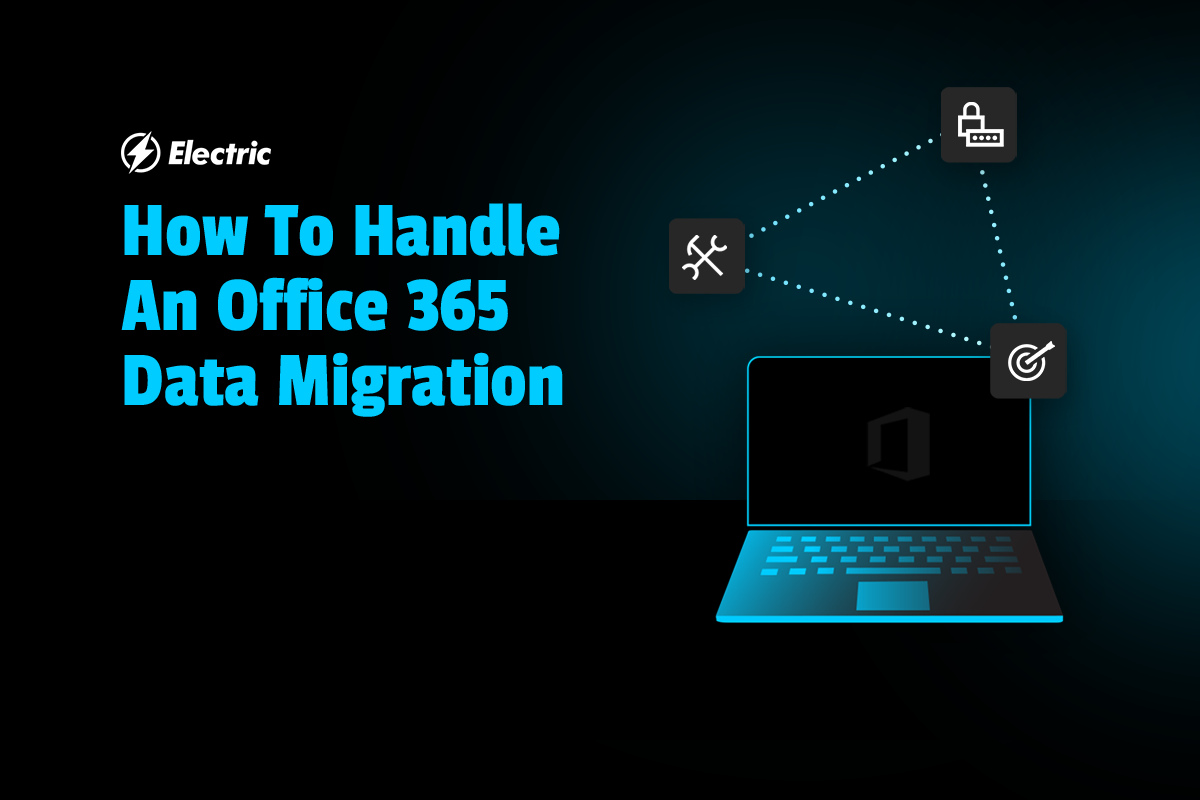
There are plenty of reasons why small to midsize companies are choosing Office 365 to support the foundations of their business. Office 365 comes with the familiar Office productivity applications which have been perfected over the last 35 years and can be used both on and offline through PC, phone, and browser. With a variety of plans for businesses, companies have the flexibility of tailoring their Office 365 experience to their needs, and all plans come with enterprise-grade privacy and security to protect company data.
Whether you are planning to migrate data to or from Office 365, having a data migration project plan is vital so your business can experience Office 365 to its fullest potential right away. Here are some tips and best practices for handling your company’s Office 365 data migration.
Office 365 Migration Project Plan
Before you get started, you’ll need an Office 365 migration plan. Take some time to work on the following preparation points in advance of the migration.
Plan Ahead
Depending on how many users you want to switch over to a new system or how much data you plan on transferring, an Office 365 data migration may require a few days rather than a few hours. Make sure to plan ahead. Look over at what type of data you are storing and the data you want to move. It’s also crucial to backup your data before starting the migration process.
Organize Your Data
Assess what types of data you plan to migrate over to Office 365. If you are migrating in phases, organize your data from the most relevant data that is required for current projects and operations to legacy data. To declutter your new system, consider whether or not it’s necessary to migrate years of legacy data to the new system, or if you can archive it for retrieval when you actually need it.
Delegate Responsibilities
Have managers and department leads assess their department data before you start migrating. Working together can help facilitate an easier migration process, and it’s ideal for company data to be organized by the people who understand it most.
The 4 Steps to Completing an Office 365 Migration
When you’re ready to get started, these are the four Office 365 migration steps you will need to follow.
1. Choose Your License
Various Office 365 licenses are available depending on your business’s needs and use cases. How many users will you need? What kind of virtual meeting requirements do you have? Your license choice can also affect everything from file storage to Mobile Device Management, so make sure to research the different options thoroughly.
2. Audit Your Data
As mentioned above, it’s critical to have a specific plan for how your data will be migrated. With this in place, start organizing your data accordingly so that only clean and relevant assets are moved to your new system. Don’t forget to assess which other systems may be affected by the migration, and include time for reconfiguration where needed.
3. Start Migrating
Most organizations take a staged-exchange migration approach, meaning the project is completed in phases depending on data priorities. However, if your business is small and you’re concerned about Office 365 migration speed, you may choose to take a faster cutover exchange. For more complex migrations, a hybrid strategy may be more appropriate.
4. Train Your Staff
Having your employees on board with your Office 365 migration plan is critical for smooth adoption. Make sure to carry out comprehensive training on how to use the new system effectively, and provide ongoing support for any questions that may arise in the following days and weeks.
Top Office 365 Migration Tools for Peace of Mind
It’s one thing to plan for data migration, and it’s another to actually do it. Luckily, there are many ways to facilitate the process, and you can find an Office 365 data migration tool to fit your migrating needs. Many of them offer checklists to make sure you cover all your bases through this important transition. Here are a few top choices for Office 365 migration.
Cloud Migrator GO: Small businesses can use Cloud Migrator GO to migrate data either to or from Google and Office 365. While there is a downloadable version of Cloud Migrator that is great for larger data migrations, Cloud Migrator GO is its SaaS-based version that is easier to use for less complex migrations. In just five simple steps, you can manage your whole migration with the same security guarantee as Cloud Migrator.
Skykick: Skykick is an Office 365 Migration tool that allows you to transfer data from Exchange, POP3/IMAP, and Google. Their automated migration tool helps SMBs plan and manage all the vital data migration steps for a smooth transition. After migrating to Office 365, they also offer a cloud backup suite to help companies protect company data for the future.
Migration Wiz: Migration Wiz was designed to help companies migrate their data without any specialized training. Project sharing allows multiple users to collaborate on the migration process. That means all department heads and managers can stay on the same page as they oversee the migration process together.
CodeTwo Office 365 Migration: CodeTwo is a Microsoft Gold Partner that offers a reliable tool to help securely move users over to Office 365. You can split the migration process up into different phases and schedule each phase for different times that won’t interrupt your daily operations. Each migration phase is also followed up by a detailed report so you can stay up to speed throughout the migration process.
Get Help with your Office 365 Migration Plan
As a small business, it’s important to know that your data is secure and intact, especially when you’re migrating it to a different platform. If you need assistance with IT management, support, or cybersecurity, we can help. To learn more about how Electric can support your IT needs, schedule a demo with an IT specialist today!



